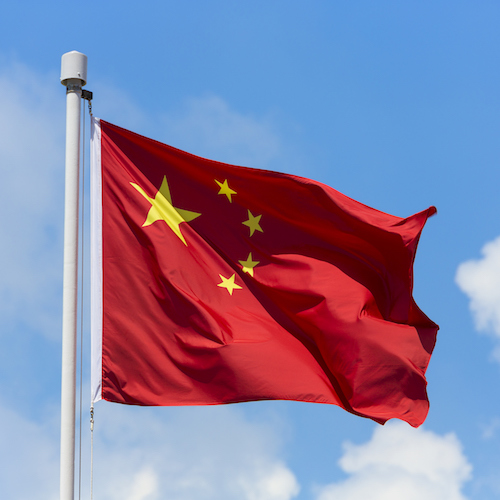Economy
Perhaps Markets and Investors Should Be Cheering S&P Downgrade of China

Published:
Last Updated:

When investors hear that one of the world’s top credit ratings agencies has issued a sovereign downgrade of one of the world’s biggest nations, it tends to bring more than just some attention. On Thursday, Standard & Poor’s issued a sovereign credit rating downgrade for China. The issues behind the downgrade may look harsh or sound as though they are a large concern. There may be a problem with assuming the worst — China is similar to the United States in that the nation has endless means to meet its obligations, and the phrase “we have seen this movie before” should come to mind.
S&P’s downgrade of China actually did not create any disruptions in the financial markets. The downgrade noted that China’s years of strong credit growth (issuing more debt) has increased its economic and financial risks. S&P’s ratings on China went down to A+/A-1 from AA−/A-1+ and the outlook is Stable.
One reason that the reaction to China’s downgrade has been muted is that Moody’s issued a similar downgrade back in May of 2017. 24/7 Wall St. issued an outlook about what that might mean to investors at that time.
S&P’s “stable” outlook implies that China is set to maintain a robust economic performance and also have an improved fiscal performance over the next three to four years. S&P also revised its transfer and convertibility risk assessment on China to A+ from AA− in its call. Several issues were cited here:
S&P also outlined what might bring another credit rating downgrade for China. This would occur if China eases its efforts to stem growing financial risk and also allows credit growth to accelerate in an effort to support economic growth. That would likely weaken China’s ability to absorb economic shocks, limit the government’s policy options and lower China’s trend growth rate.
24/7 Wall St. took a look at the major equities, funds and exchange traded funds (ETFs) that track the growth of China and its immediate regions. We also compared these to the prices and reactions seen back when Moody’s issued its similar downgrade in May. It almost looks possible that outside investors looking at China’s top stocks (American depositary shares) and funds (ETFs) should be cheering that China was downgraded.
Alibaba Group Holding Ltd. (NYSE: BABA) was trading down almost 1% at $176.20 after the downgrade, but this stock was at $123 or so when Moody’s downgraded China in May. Alibaba is the largest e-commerce company in China and the Asia-Pacific region.
Baidu Inc. (NASDAQ: BIDU) shares were down 0.3% at $237.25 on Thursday, but that was versus $190.67 when Moody’s cut China in May. This company is more or less the premier search engine in China, with a market cap of $82 billion.
China Mobile Ltd. (NYSE: CHL) is one of the largest mobile telecom service providers in China, with a market cap of $208 billion. The stock was trading down just 0.2% at $51.21, versus $55.70 when Moody’s issued its May downgrade of China.
China Unicom (Hong Kong) Ltd. (NYSE: CHU) was actually positive on the day, up by 1.1% at $14.66, and its shares were up 4% at $14.38 back in May.
Yum China Holdings Inc. (NYSE: YUMC), the new Yum entity that is China-only, was down 2% at $39.40 on Thursday, but this stock was at $37.63 at the Moody’s downgrade date in May. Its post-spin high is $42.12. This restaurant company operates all the KFC, Pizza Hut and Taco Bell franchises in the People’s Republic.
China Life Insurance Co. Ltd. (NYSE: LFC was last seen trading up 0.2% at $15.31 on Thursday, versus a price of $16.06 in May. The Chinese life insurance giant has a market cap of about $112 billion.
China Petroleum & Chemical Corp. (NYSE: SNP) shares were down 0.2% at $75.90 on Thursday, versus $81.22 back in May. This energy and chemical company had a market cap of $94 billion when Moody’s announced its downgrade, and that is now at $89 billion.
iShares China Large-Cap (NYSEMKT: FXI) was up when Moody’s had its May downgrade (at $39.66 then) and shares were up two cents at $44.98 after S&P’s downgrade on Thursday. This is the top China ETF.
iShares MSCI Hong Kong (NYSEMKT: EWH) was up 0.4% to $23.41 at the Moody’s downgrade reaction in May, and the shares were down nine cents at $24.92 on Thursday after S&P downgraded China.
The China Fund Inc. (NYSE: CHN) was down less than five cents at $20.91 on Thursday, versus a drop of 0.1% to $17.92 back when Moody’s issued its downgrade in May.
In addition, 24/7 Wall St. has named winners and losers if the president carries out much more aggressive trade war practices against China.
Retirement can be daunting, but it doesn’t need to be.
Imagine having an expert in your corner to help you with your financial goals. Someone to help you determine if you’re ahead, behind, or right on track. With SmartAsset, that’s not just a dream—it’s reality. This free tool connects you with pre-screened financial advisors who work in your best interests. It’s quick, it’s easy, so take the leap today and start planning smarter!
Don’t waste another minute; get started right here and help your retirement dreams become a retirement reality.
Thank you for reading! Have some feedback for us?
Contact the 24/7 Wall St. editorial team.